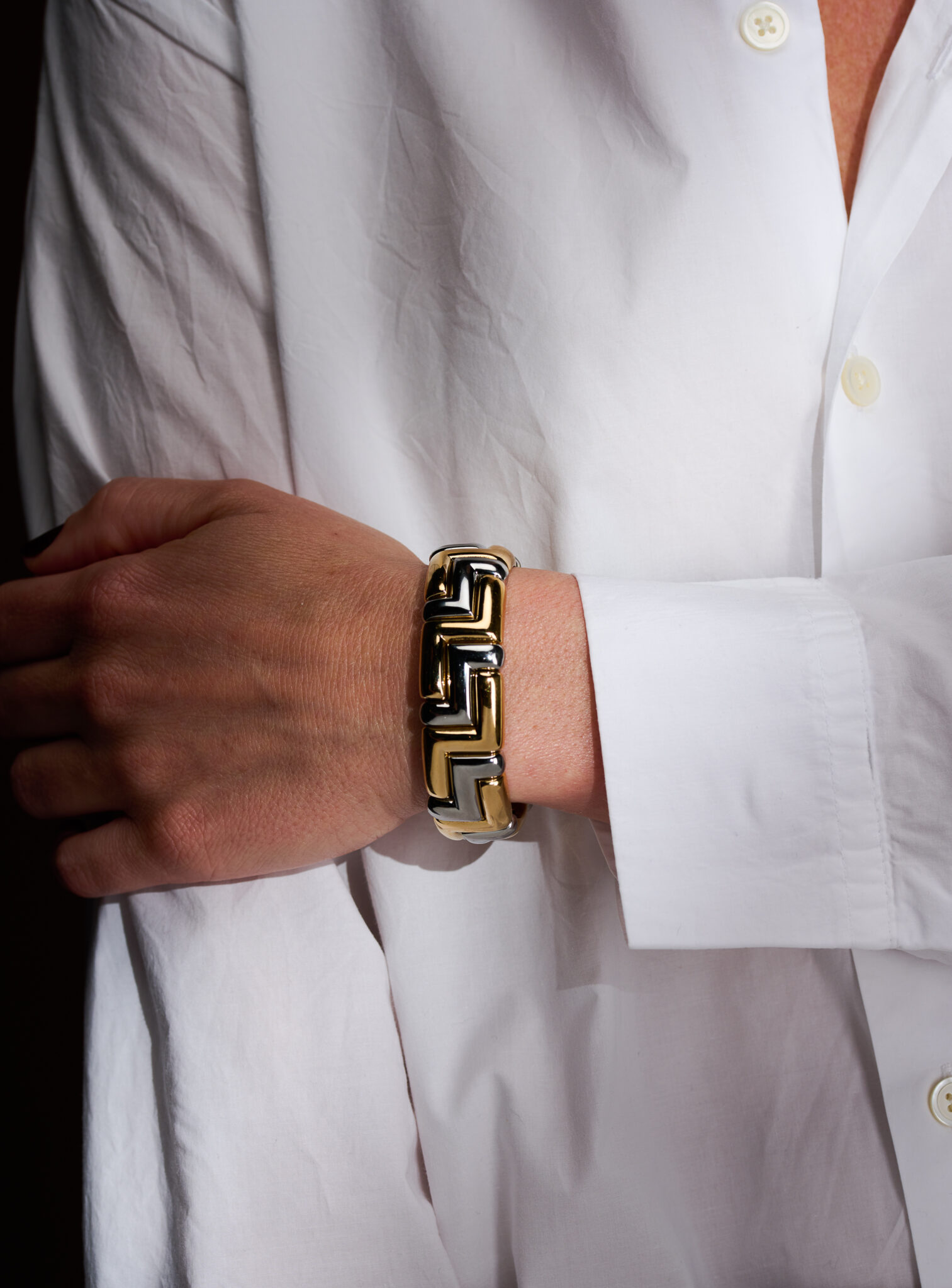Stunning Bvlgari cuff bangle crafted in 18 karat yellow gold and grey steel featuring geometric links interlocking to create a bold and alluring meander zigzag design. This striking bangle cuff measures .72 of an inch wide and has an inner circumference of 6.25 inches / 15.9cm. inside across ∅ 6,5 cm / 2.56in
weighing 83 g. Signed Bvlgari
The play of metals of contrasting colors is characteristic ingredient of Bulgari Jewels. The desire to maximize the use of metals of contrasting colors brought Bulgari, in the late 1970s, also to use grey steel in combination with yellow gold. This involved a lengthy process of technological research which led Bulgari to select a type of steel which for its properties is normally employed in diverse spheres such as motor, aeronautical, naval, chemical and medical industries.
This particular type of steel was deemed suitable in color – complementing the warm hues of red and yellow gold; it is absolutely stainless and suitable for microfusion. The problems Bulgari had to face and solve in the working of steel were related to its high melting point (1300 – 1500 °C) and its low malleability, compared to 18 karat gold. The working of steel therefore is much more labour intensive than that of gold.
Bulgari’s unconventional approach to jewelry is thus confirmed. Just as the firm has dared to juxtapose the finest and most costly gems with much less precious stones – for sake of color effect – it has also combined the magic of gold with the utilitarian quality of steel in order to achieve a striking ornament.
Here Bvlgari draws inspiration from its Greek heritage. Glamorous and exquisite. A bold and daring design of highest craftmanship. A meander or meandros (Greek: Μαίανδρος) is a decorative border constructed from a continuous line, shaped into a repeated motif. Among some Italians, these patterns are known as “Greek Lines”. Such a design also may be called the Greek fret or Greek key design, although these terms are modern designations even though the decorative motif appears thousands of years before that culture, thousands of miles away from Greece, and among cultures that are continents away from it. Usually, the term is used for motifs with straight lines and right angles and the many versions with rounded shapes are called running scrolls or, following the etymological origin of the term, may be identified as water wave motifs.
The House of Bvlgari his established in Rome, Italy in 1884 by Sotorio Bulgari, a Greek silversmith. Sotorio focused on creating spectacular silver ornaments, which quickly became popular with English tourists. The first Bvlgari store was opened on Via Sistina, and new stores were opened on Via Condotti, (which remains the flagship store) and in other tourist destinations. In 1932, after the passing of Sotorio, his sons, Giorgio and Constantino, joined the business and redirected the focus of Bvlgari to High jewelry, finding inspiration in the architectural designs and monuments of Rome. The Bvlgari logo was used for the first time in 1934 with the letter “V” replacing the letter “U” in a homage to the classical Latin alphabet. In the 1970s, Bvlgari expanded to the USA.



















